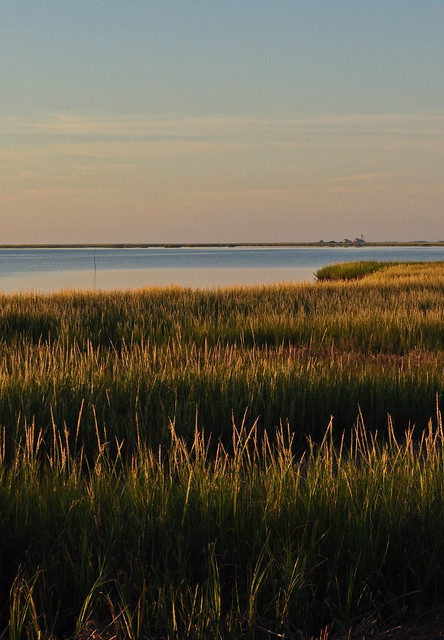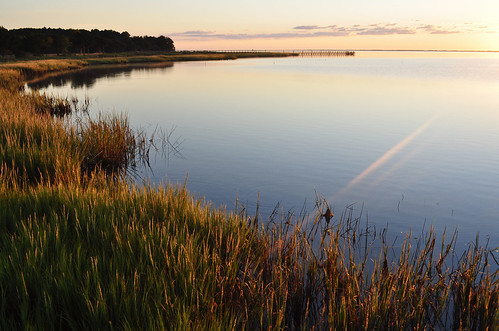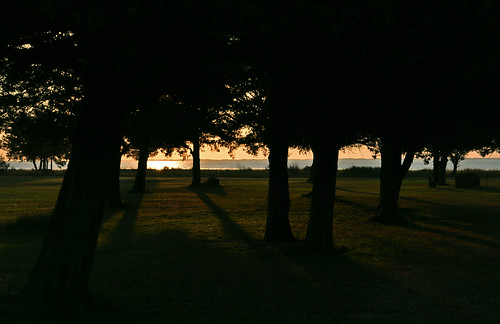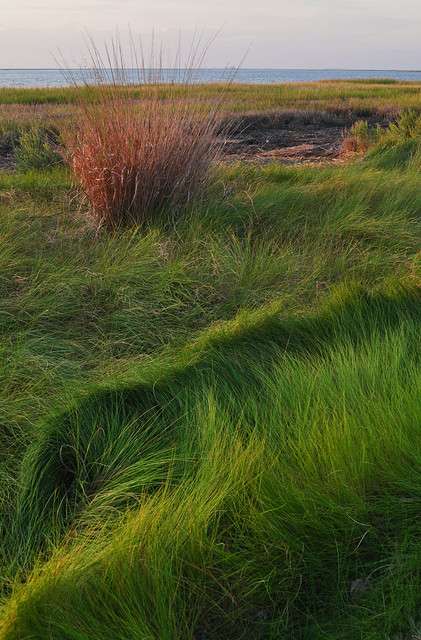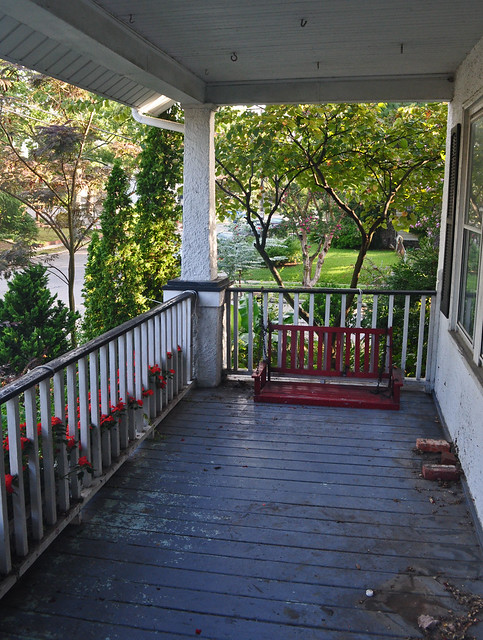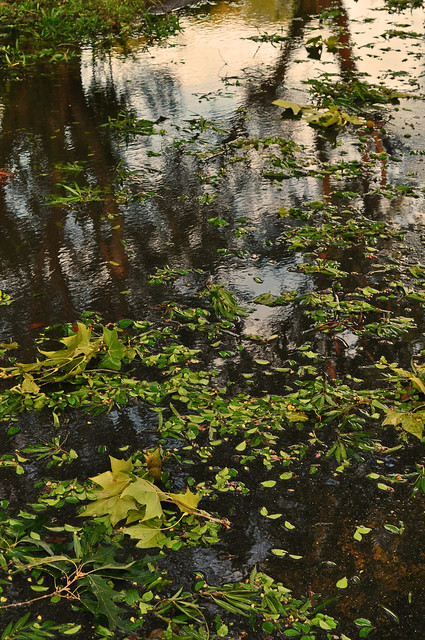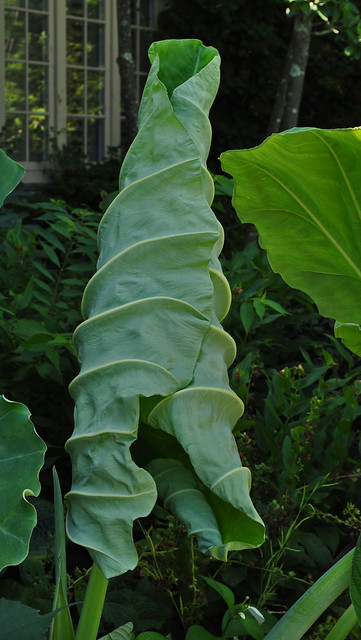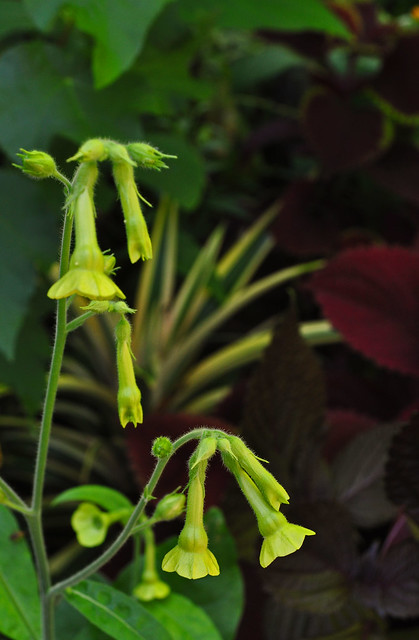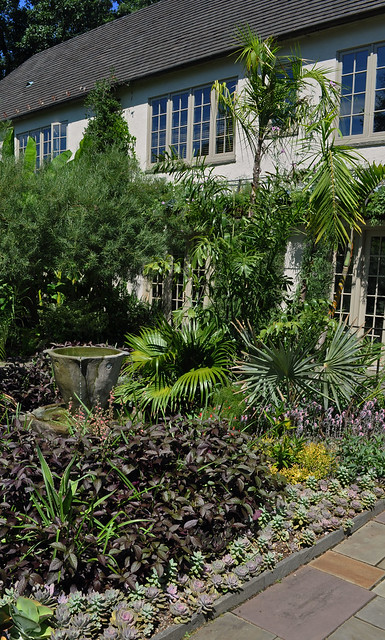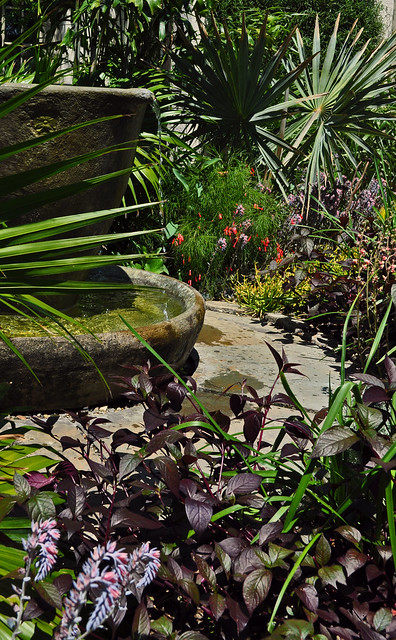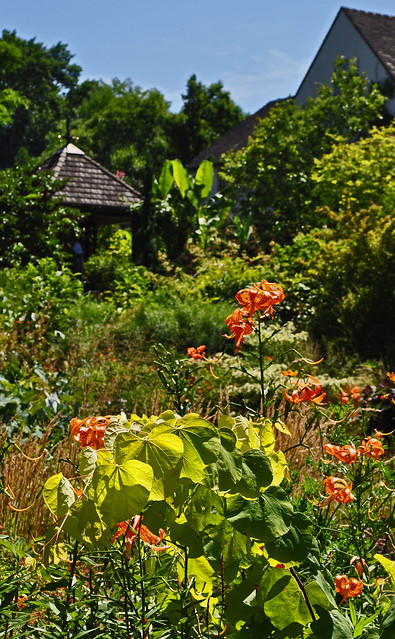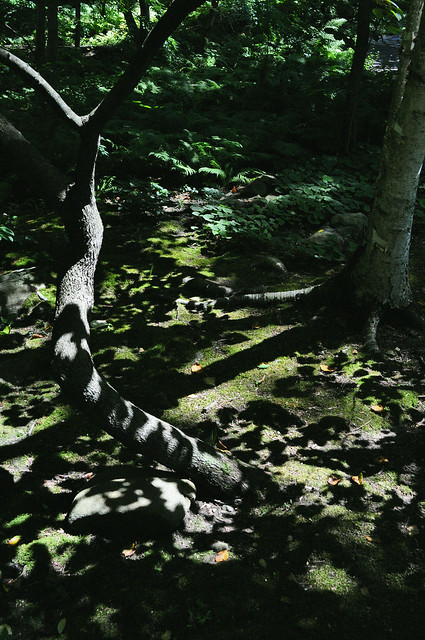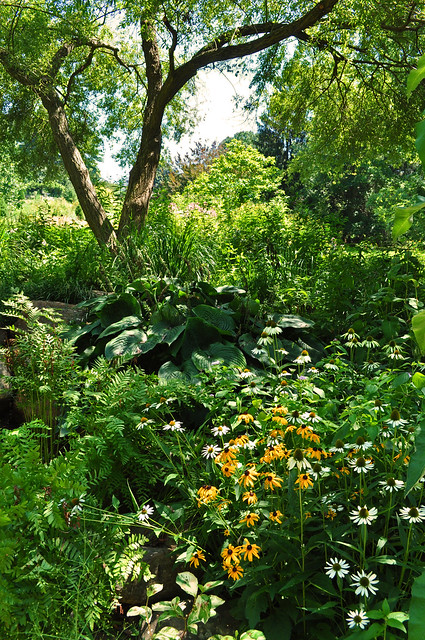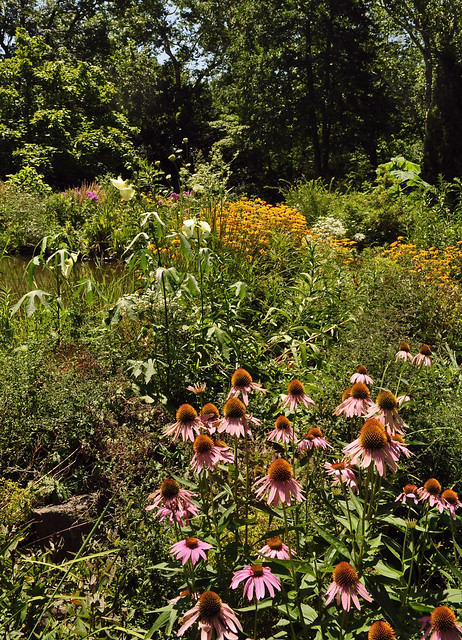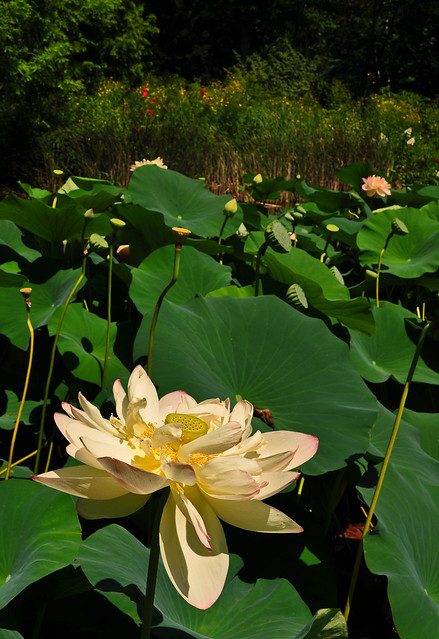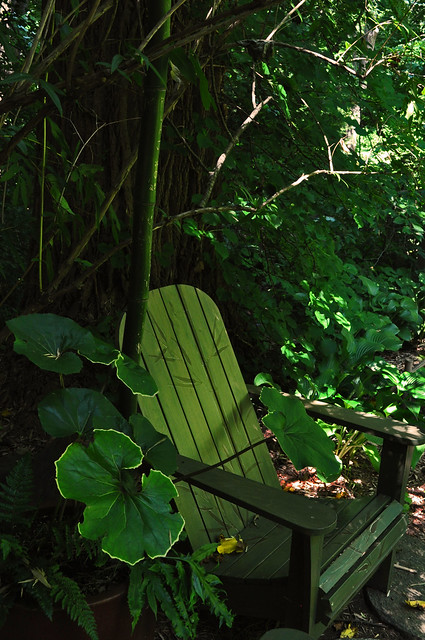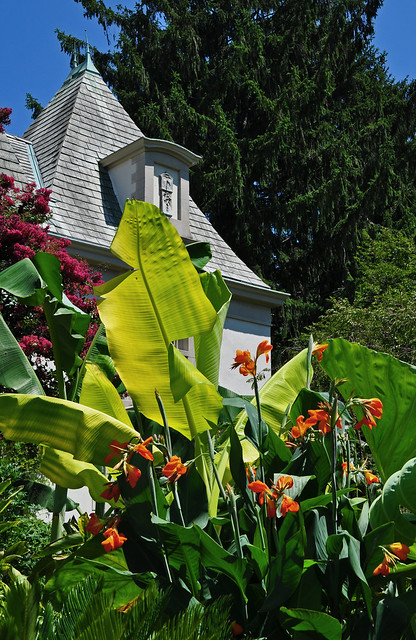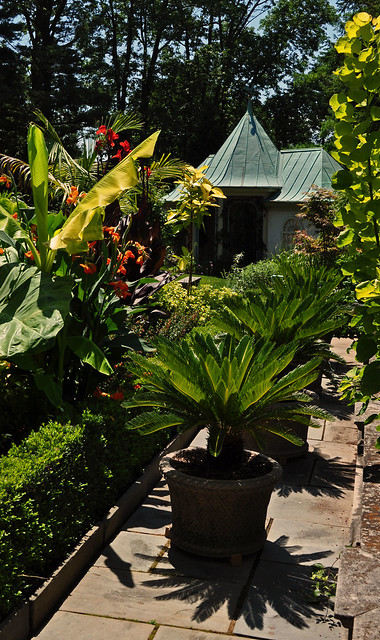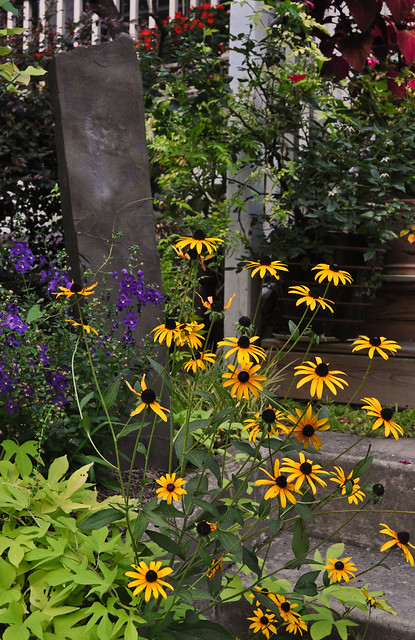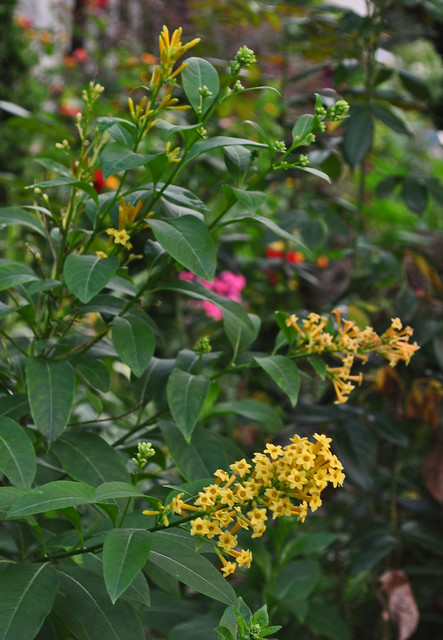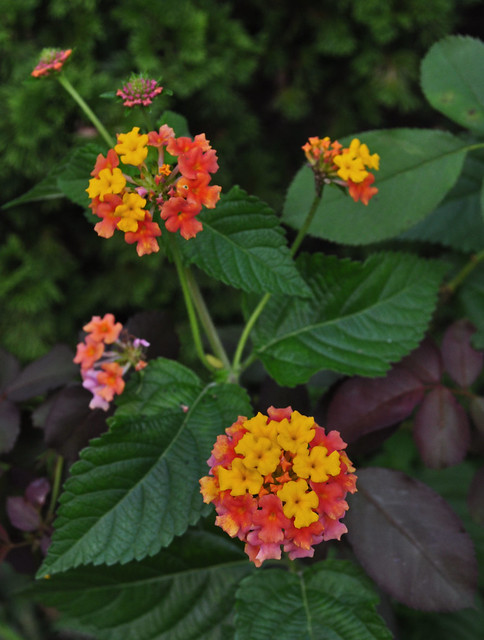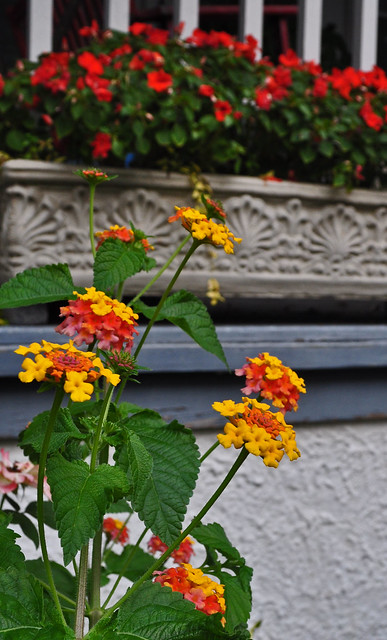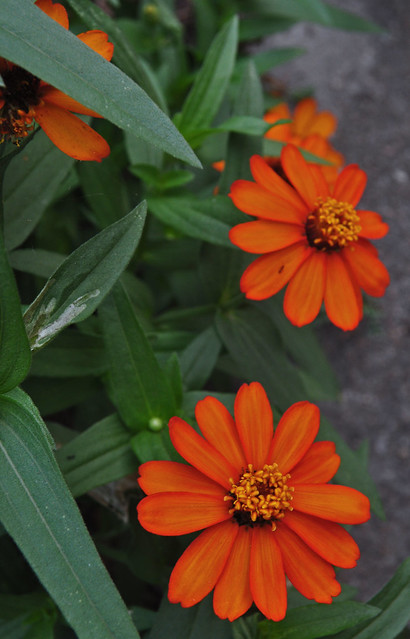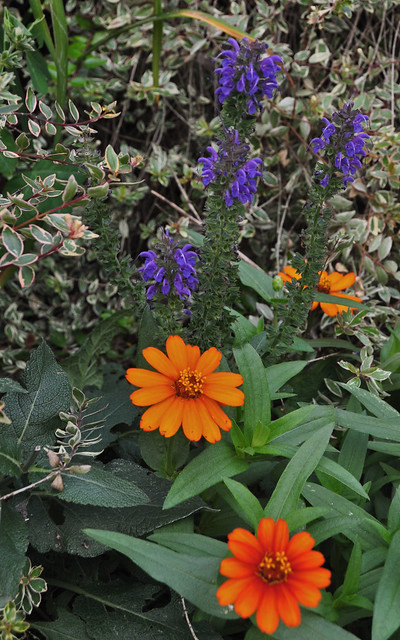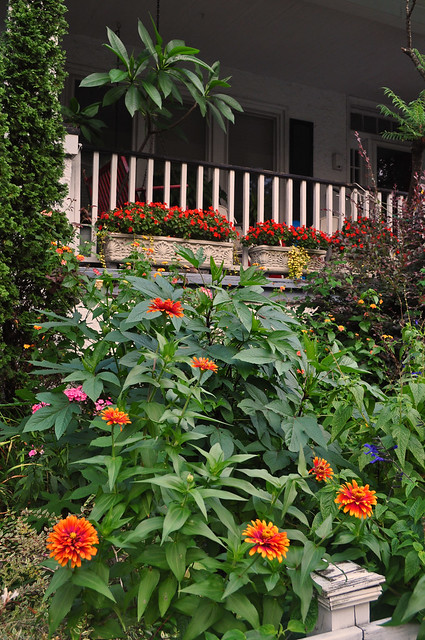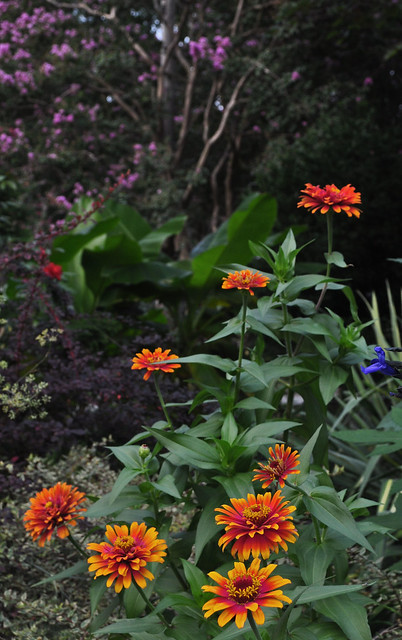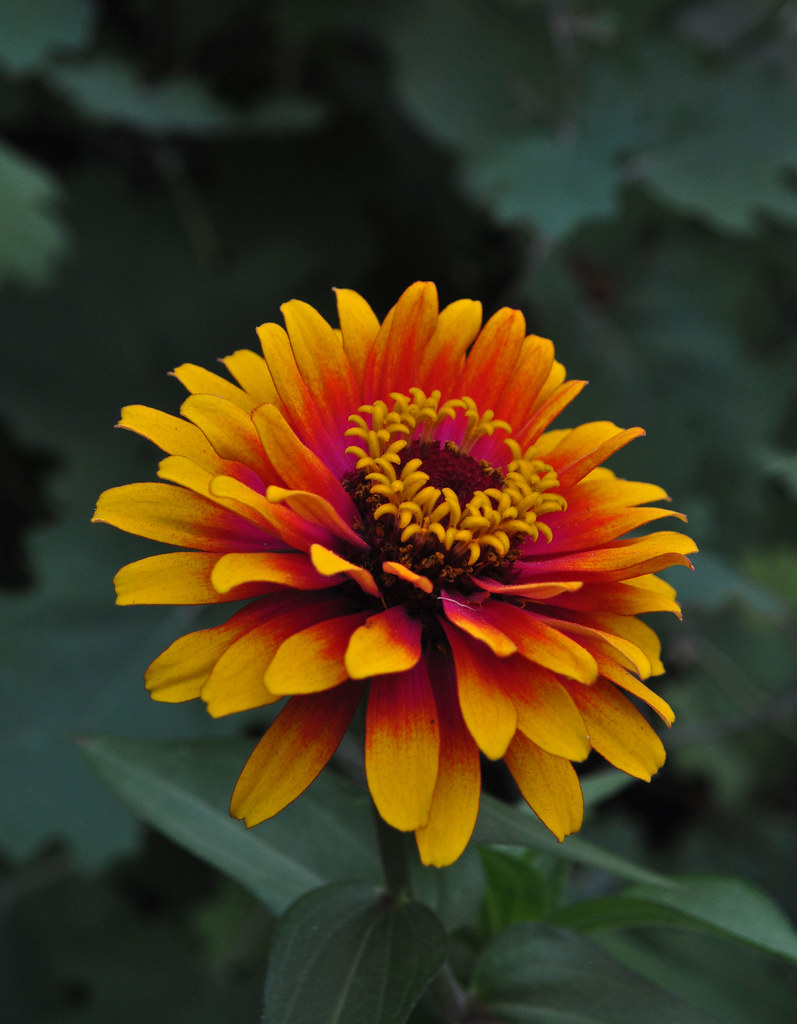Just as we were getting used to our daily inundation of smoke from the Dismal Swamp fire, we go and have an earthquake, in Virginia of all places. Minor by Left Coast standards, but shocking to us nonetheless. But we had no time to dwell on fractures in the earth's crust, for we had an impending hurricane to deal with. As my friend Amy suggested, August was our month for Earth, Wind and Fire. Of the three, the wind portion of that trio had me the most concerned. Early on in its extensive coverage, Irene was predicted to be a "life changing event" and one that could "reshape the coastline". As a survivor of Hurricane Hugo, a life changing event for me, I pay attention when phrases like this are used.
So early in the week I headed to my parent's to help them get ready for the storm. I was already planning some time off there for one last summer trip of kayaking, beaching and relaxing, but instead it became time spent elevating, stowing and battening. Like many, we also watched a lot of television trying to determine how bad Irene was going to be, and what needed to be done in case of each possible scenario. I can't imagine living far from the coast, but one of the prices of that choice is having to deal with these sorts of events. So you remember what has happened before, do all that you can in preparation for what's to come and hope for the best.
The morning before I returned to Norfolk I walked to the nearby shore of Metompkin Bay. It is always beautiful to me, no matter the season, but I really enjoy the late summer when the marsh is at its peak. At the far side of the bay lies a thin strip of sand and a few dunes which is all that separates the very low lying Eastern Shore from the Atlantic beyond. I couldn't help wondering what the ocean might bring in two days.
Back in Norfolk I busied myself getting my own house in order. Among other tasks, I cleared the outside of anything that needed protection or that could become a projectile. When we were done the inside of our house looked as if it had taken a huge breath and inhaled the entire contents of the porch and deck.
With a mind toward this blog, I took this shot to show a before photo of the garden. We have had decent-for-August rains; the garden is looking full right now; I am happy with how it looks and wanted to remember it that way.
Fortunately I did not need to have an "after" photo. After a day and a half of wind, torrential rains, high tides and being stuck indoors - Irene left us with little damage. We were very, very fortunate and I am glad the full forecast for this area did not materialize. Don't get me wrong, we were not unphased. Several people in North Carolina and Virginia lost their lives, some had extensive property damage, and there was great inconveniences all over. But it could have been so much worse. All in all, my mind tells me Irene fell short of her older sister Isabel and well below the 2009 nor'easter.
Now that the storm has headed off to Greenland, there seems to be much debate about its media coverage and forecasting. Our power stayed on through the first half of the storm and we were able to stay updated and connected through the television and computer. However, I am pissed at CNN and The Weather Channel. At the height of the storm, when North Carolina and Virginia were under its full effects, these two networks gave you the impression there was a place called Cape Hatteras where hurricanes come ashore and then nothing of import north of it until you get to the Jersey beaches and Manhattan. I am not doubting the need to cover these areas, or the severity of Irene there, but I just wanted a little more balance, a little validation, even a quick shout-out. I wonder if they have ever heard of a place called Vermont.
August 29, 2011
August 21, 2011
Chanticleer - A Pleasure Garden
On my birthday in late July I got a really great present - a chance to revisit the gardens of Chanticleer. Though I had been there before, this is where I wanted to spend the day. Besides strolling through the garden, I was hoping to get some great photos, but the day was brilliantly sunny, hot and clear, not the best day for a photo shoot, though we had a good time just the same.
Chanticleer was originally the family estate of the Rosengartens and is set in the rolling hills west of Philadelphia. Though the garden only opened about 20 years, it quickly made a name for itself in the world of horticulture through its innovative plant and design choices. Chanticleer is divided into a series of garden areas, linked by easy paths and separated by large open areas of lawn and spectacular trees. There are generous assortments of unique seating options, unusual drinking fountains, artful paving and some of the nicest restrooms anywhere (worth going into even if you don't have to go). Being a self-designated pleasure garden, your horticultural head won't be muddled by plant labels. If you want to know what is planted in each area there are lists available in handmade boxes. Or you could just enjoy the gardens as a whole and not worry about its individual parts.
We will start our tour logically enough at the front entrance. BTW, if you consider yourself a garden professional let them know at the gate, and you will get in for free, just flash a business card.
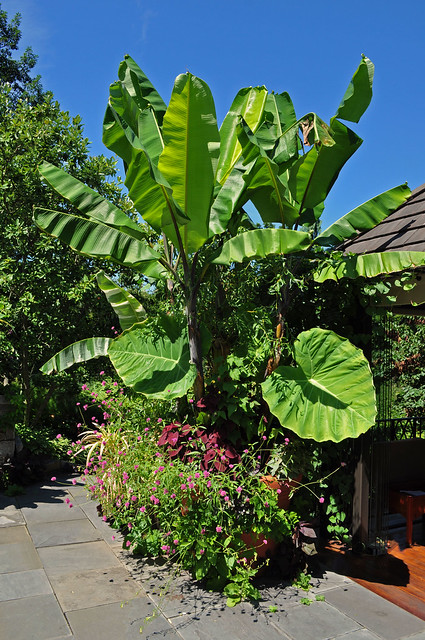
Near the front entrance is one of their more famous gardens, The Teacup Garden.

Nothing against the sport of tennis, you can see that anywhere, but I would rather look at Chanticleer's Tennis Court Garden.
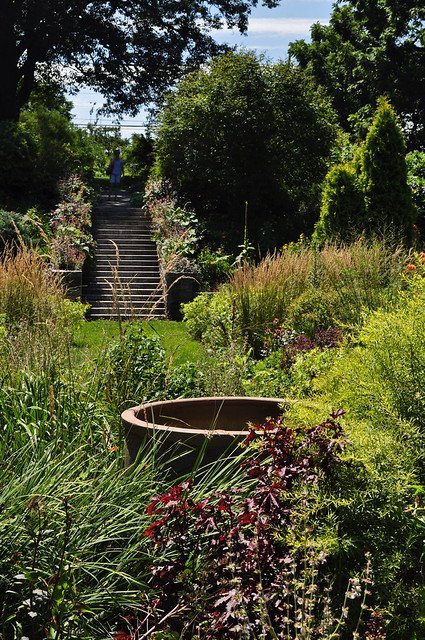
There is a large garden for cut flowers and vegetables.
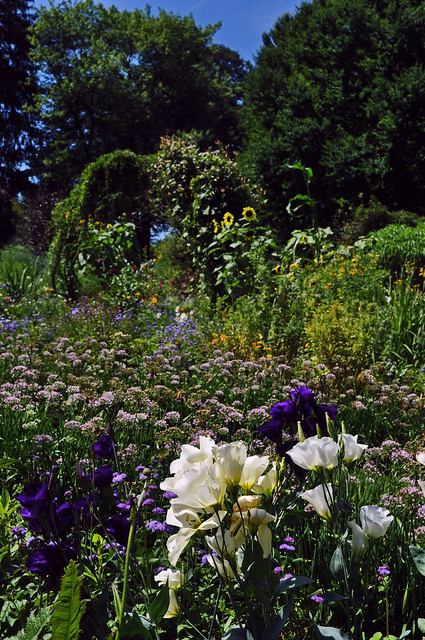
The Stream Garden is a bit more wooded and perhaps the most traditional garden at Chanticleer. It is also home to some of the finest specimens of Stewartia (not pictured) I have ever seen, a whole grove of them.
On a hill in the middle of Chanticleer is my favorite garden, The Ruin Garden. Once the site of an old house, and that spirit has been evoked in stone, water and plants. It is perhaps one of the most creative designs I have ever seen, and the too often used concept of "garden rooms" has been taken at face value in this creation.


Minder Woods

Gravel Garden

The docent at the front entrance made a point of telling us not to miss The Pond Garden, and with all of its color, her suggestion was appreciated, but not necessary.
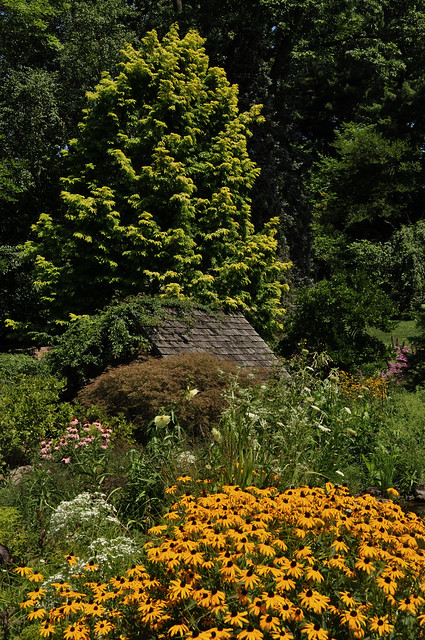
The Asian Woods
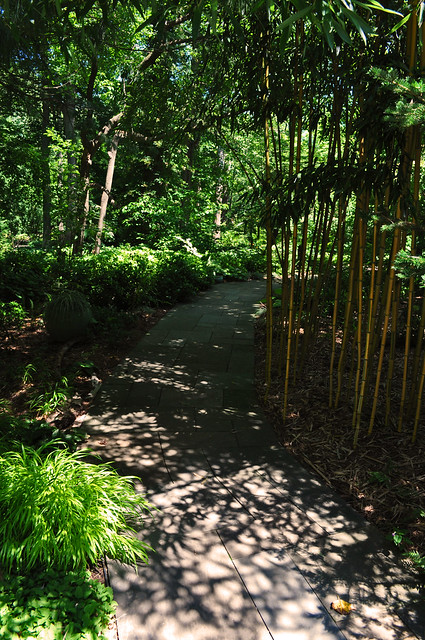
The Chanticleer House Garden surrounds the largest of the two houses on the property. The hardscaping around the house is in a more formal and traditional design, but the plantings were anything but.
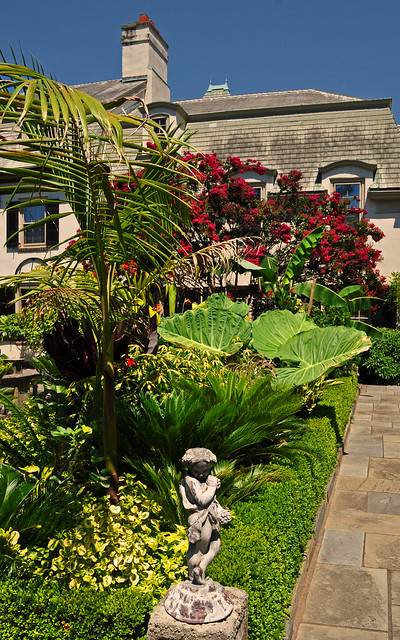
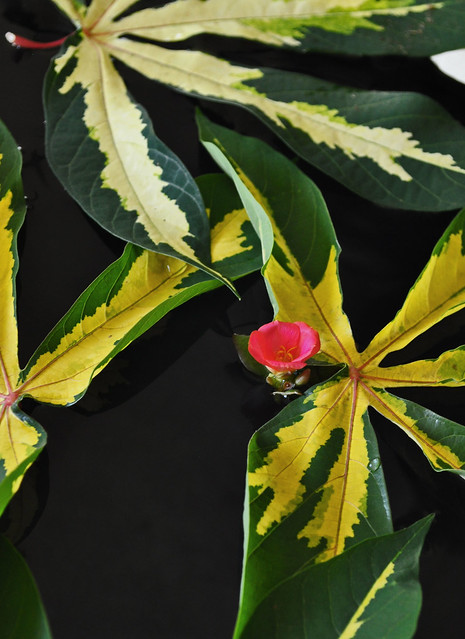
If you are ever in the Philadelphia area, I highly recommend a visit to Chanticleer, and if you are travelling with non-gardeners, it has been my experience that they will have a good time too.
(If you would like to see more, you can click here for my complete Flickr set of Chanticleer photos.)
Chanticleer was originally the family estate of the Rosengartens and is set in the rolling hills west of Philadelphia. Though the garden only opened about 20 years, it quickly made a name for itself in the world of horticulture through its innovative plant and design choices. Chanticleer is divided into a series of garden areas, linked by easy paths and separated by large open areas of lawn and spectacular trees. There are generous assortments of unique seating options, unusual drinking fountains, artful paving and some of the nicest restrooms anywhere (worth going into even if you don't have to go). Being a self-designated pleasure garden, your horticultural head won't be muddled by plant labels. If you want to know what is planted in each area there are lists available in handmade boxes. Or you could just enjoy the gardens as a whole and not worry about its individual parts.
We will start our tour logically enough at the front entrance. BTW, if you consider yourself a garden professional let them know at the gate, and you will get in for free, just flash a business card.

Near the front entrance is one of their more famous gardens, The Teacup Garden.

Nothing against the sport of tennis, you can see that anywhere, but I would rather look at Chanticleer's Tennis Court Garden.

There is a large garden for cut flowers and vegetables.

The Stream Garden is a bit more wooded and perhaps the most traditional garden at Chanticleer. It is also home to some of the finest specimens of Stewartia (not pictured) I have ever seen, a whole grove of them.
On a hill in the middle of Chanticleer is my favorite garden, The Ruin Garden. Once the site of an old house, and that spirit has been evoked in stone, water and plants. It is perhaps one of the most creative designs I have ever seen, and the too often used concept of "garden rooms" has been taken at face value in this creation.


Minder Woods

Gravel Garden

The docent at the front entrance made a point of telling us not to miss The Pond Garden, and with all of its color, her suggestion was appreciated, but not necessary.

The Asian Woods

The Chanticleer House Garden surrounds the largest of the two houses on the property. The hardscaping around the house is in a more formal and traditional design, but the plantings were anything but.


If you are ever in the Philadelphia area, I highly recommend a visit to Chanticleer, and if you are travelling with non-gardeners, it has been my experience that they will have a good time too.
(If you would like to see more, you can click here for my complete Flickr set of Chanticleer photos.)
August 18, 2011
Code Purple
A new element has been added to our local weather forecasts, color coded air quality alerts. Today was a code purple kind of day, the worst. The problem is a fire in the Great Dismal Swamp National Wildlife Refuge that was started by lightening on August 4th. It has continued to burn almost out of control to the point that over 6000 acres are now affected, mostly in Virginia, but also in North Carolina.

The situation has been compounded by the hand of nature and the hand of man. There are still many fallen trees from 2003's Hurricane Isabel. Though not as severe, there was another fire last year that left behind incompletely burnt fuel. Ironically, that fire was started by one of the pieces of equipment used in efforts to restore the Atlantic White Cedar (Chamaecyparis thyoides) habitat. This year we had drought conditions until just recently, so the grasses and shrubs were in a dry state. However, the trump card in this disaster is the peat. Millenia old layers of dry, carbon-rich peat are slowly burning causing the thick acrid smoke. In some places it has been estimated that up to 4-6' of the peat has burned changing elevations of the swamp.
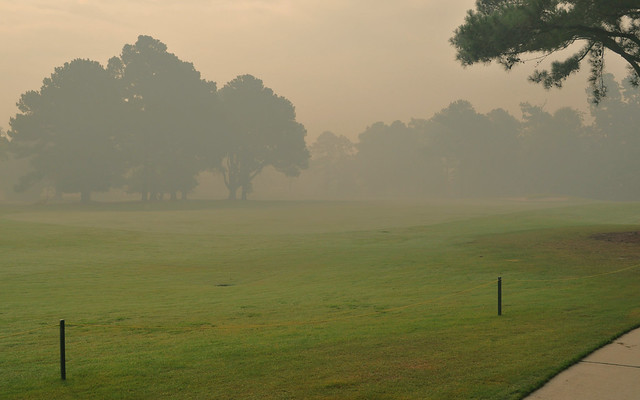
The peat would not be so dry if the water levels in the Dismal Swamp were kept at natural levels. Beginning with George Washington, the swamp has been subjected to centuries of ditching, canals and draining which have lowered the ground water level several feet. In another bit of irony, the strategy to attack this year's fire involves installing large pumps throughout the swamp to redistribute the water and fight the fire. If you have ever smothered a campfire with water, you know how much smoke is produced.
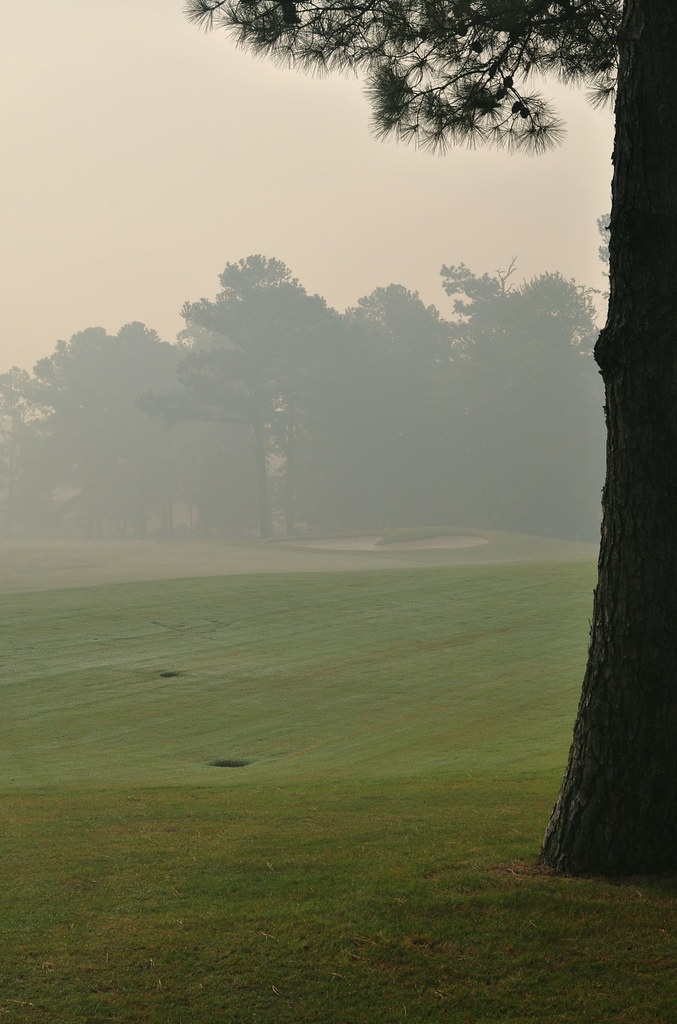
This morning there were several accidents due to the smoke, causing road closures and general traffic mayhem, in an area already famous for its mayhem. It also made working outside difficult, but I surprised myself as to what I could tolerate. We are supposed to have another day of this tomorrow, but then after the wind will shift, and some other group of people will be affected. In the meantime I will hope the pumps work and more rain might fall.

The situation has been compounded by the hand of nature and the hand of man. There are still many fallen trees from 2003's Hurricane Isabel. Though not as severe, there was another fire last year that left behind incompletely burnt fuel. Ironically, that fire was started by one of the pieces of equipment used in efforts to restore the Atlantic White Cedar (Chamaecyparis thyoides) habitat. This year we had drought conditions until just recently, so the grasses and shrubs were in a dry state. However, the trump card in this disaster is the peat. Millenia old layers of dry, carbon-rich peat are slowly burning causing the thick acrid smoke. In some places it has been estimated that up to 4-6' of the peat has burned changing elevations of the swamp.

The peat would not be so dry if the water levels in the Dismal Swamp were kept at natural levels. Beginning with George Washington, the swamp has been subjected to centuries of ditching, canals and draining which have lowered the ground water level several feet. In another bit of irony, the strategy to attack this year's fire involves installing large pumps throughout the swamp to redistribute the water and fight the fire. If you have ever smothered a campfire with water, you know how much smoke is produced.

This morning there were several accidents due to the smoke, causing road closures and general traffic mayhem, in an area already famous for its mayhem. It also made working outside difficult, but I surprised myself as to what I could tolerate. We are supposed to have another day of this tomorrow, but then after the wind will shift, and some other group of people will be affected. In the meantime I will hope the pumps work and more rain might fall.
August 15, 2011
Bloom Day - Pulling Weeds and Counting Blessings
This Bloom Day finds me pulling weeds and counting blessings. I am doing one because we have had semi-regular rains, and I am doing the other because we have had semi-regular rains. Though we have had our share of hot weather which is normal, we have lately been plagued by smoke from the fire in the Dismal Swamp. Lightening struck last week and set the peat on fire, and now the area burning (or burned) is over 6000 acres. When the wind comes from the south, a choking, acrid fog envelops the city. But all and all, compared with the weather other parts of the country are having where no rain has fallen, temperatures have been over 100 for weeks on end, and the landscape is dying - I feel blessed.
Let's start this Bloom Day tour at the bottom of the front steps where the wind blew in a seed from my neighbor's Black-eyed Susan (Rudbeckia fulgida) which planted itself in a most inhospitable place, in a tight concrete crevice. The purple flower is an Angelonia (Angelonia x) and the chartreuse vine was labeled to be a more diminutive, less aggressive Sweet Potato Vine (Ipomoea batatas), but this particular vine ignores labels.
Another self-seeder in my yard is Abelmoschus manihot. I first planted this Okra/Hibiscus relative four years ago not expecting it to come back, since it is too cold here for it to be perennial, but the seeds are apparently quite fertile. I love its moon-yellow flower and maroon black eye.
Late this spring I planted two other plants that I am zone-stretching on. One is David Verity Cuphea (Cuphea x 'David Verity')...
... and the other is Orange Zest Cestrum (Cestrum aurantiaum 'Orange Zest'). This plant came to the garden center in late April with blooms on it, I planted it in May in full of color, and not one day has gone by since when it was not in flower. I know another local gardener who grows it and it dies to the roots, but comes back reliably. I am a little warmer in the winter than where they are, so I have high hopes it may be more shrub-like.
Speaking of reliable, I can't imagine ever gardening in the summer without Miss Huff (Lantana camara 'Miss Huff') keeping a colorful eye on things.
I always plant a fair number of annuals, because around here the summers start in May and don't often end until October. So I need things that can carry color in the garden through the long hot season. One of my best annuals are the smaller, linear-leaf Zinnias. I like the Zahara and Profusion series, and this year the one I planted was Profusion Fire (Zinnia x 'Profusion Fire'). It has bloomed non-stop since May and shows no signs of slowing down.
We will end with another Zinnia, Zowie (Zinnia elegans 'Zowie' ). I am so pleased with this plant, I love the color, the individual flowers last for nearly two weeks, it is in your face tall, and it has bloomed as prolifically as the smaller Profusion. Every circus needs clowns and these are mine.
If you would like to see how summer is treating other gardeners, (and if they like the color orange as much as I do) then you need to stop by May Dreams Gardens where hostess Carol throws a monthly party called Garden Bloggers Bloom Day. While you are there please thank her for all the effort.
Let's start this Bloom Day tour at the bottom of the front steps where the wind blew in a seed from my neighbor's Black-eyed Susan (Rudbeckia fulgida) which planted itself in a most inhospitable place, in a tight concrete crevice. The purple flower is an Angelonia (Angelonia x) and the chartreuse vine was labeled to be a more diminutive, less aggressive Sweet Potato Vine (Ipomoea batatas), but this particular vine ignores labels.
Another self-seeder in my yard is Abelmoschus manihot. I first planted this Okra/Hibiscus relative four years ago not expecting it to come back, since it is too cold here for it to be perennial, but the seeds are apparently quite fertile. I love its moon-yellow flower and maroon black eye.
Late this spring I planted two other plants that I am zone-stretching on. One is David Verity Cuphea (Cuphea x 'David Verity')...
... and the other is Orange Zest Cestrum (Cestrum aurantiaum 'Orange Zest'). This plant came to the garden center in late April with blooms on it, I planted it in May in full of color, and not one day has gone by since when it was not in flower. I know another local gardener who grows it and it dies to the roots, but comes back reliably. I am a little warmer in the winter than where they are, so I have high hopes it may be more shrub-like.
Speaking of reliable, I can't imagine ever gardening in the summer without Miss Huff (Lantana camara 'Miss Huff') keeping a colorful eye on things.
I always plant a fair number of annuals, because around here the summers start in May and don't often end until October. So I need things that can carry color in the garden through the long hot season. One of my best annuals are the smaller, linear-leaf Zinnias. I like the Zahara and Profusion series, and this year the one I planted was Profusion Fire (Zinnia x 'Profusion Fire'). It has bloomed non-stop since May and shows no signs of slowing down.
We will end with another Zinnia, Zowie (Zinnia elegans 'Zowie' ). I am so pleased with this plant, I love the color, the individual flowers last for nearly two weeks, it is in your face tall, and it has bloomed as prolifically as the smaller Profusion. Every circus needs clowns and these are mine.
If you would like to see how summer is treating other gardeners, (and if they like the color orange as much as I do) then you need to stop by May Dreams Gardens where hostess Carol throws a monthly party called Garden Bloggers Bloom Day. While you are there please thank her for all the effort.
Subscribe to:
Posts (Atom)
